
Roots
To stand before a single coil, a delicate wave, or a tightly wound curl, is to glimpse an ancient chronicle. For those of us whose lineage carries the distinct imprint of textured hair, the experience of a strand goes beyond mere biology; it carries a whisper, a silent song from generations past. Each twist and turn of the helix holds a memory, an ancestral echo, connecting us to a heritage deeply entwined with survival, identity, and the very spirit of our communities. To comprehend what textured hairstyles truly mean through history, one must first listen to the ground upon which they grew, recognizing the hair itself as a living archive.
Consider the profound connection to the earth, the elements, and the wisdom of those who walked before us. Our hair, in its myriad forms, has always been a testament to resilience, a visible declaration in a world that often sought to diminish its inherent splendor. This journey begins at the source, in the very fabric of our being, exploring the elemental biology that has shaped, and been shaped by, a vibrant cultural legacy.

The Genetic Tapestry of Curl
The unique configurations of textured hair are not random chance but a meticulous unfolding of genetic inheritance. From the elliptical shape of the hair follicle to the uneven distribution of keratin, every structural detail contributes to the distinctive curl patterns we observe. These biological blueprints, passed down through countless generations, represent an adaptive brilliance, allowing hair to offer protection from harsh sun, regulate temperature, and endure diverse climates.
Understanding the microscopic architecture of textured hair—how the keratin proteins arrange themselves into complex disulfide bonds, how the hair shaft forms its characteristic bends—provides a scientific underpinning to the living legacy that adorns our heads. It is a story told not just in genes, but in the very resilience of the fiber itself.
Textured hair, a masterpiece of genetic adaptation, carries ancestral blueprints within each curl, a testament to ancient resilience and environmental harmony.
This genetic predisposition has been explored in modern science, yet its practical understanding existed in ancestral communities for millennia. The knowledge of how different hair textures behaved, what they needed, and how they could be manipulated was empirical, born of observation and tradition. It was a science passed down through touch, through practice, through the sacred rituals of care. The very language used to describe hair, often tied to natural phenomena or animal characteristics in various African languages, speaks to this intimate understanding of its structure and behavior long before microscopes revealed its cellular secrets.

Ancestral Science of Hair Classification
Long before contemporary numerical grading systems sought to categorize curl patterns, ancestral societies possessed their own intricate classifications. These systems were less about rigid categorization and more about recognizing hair’s intrinsic qualities, its social significance, and its practical application for styling. They acknowledged the infinite variations, from the tightly coiled strands that defined certain lineages to the softer, more yielding waves that marked others, all respected for their unique place within the communal aesthetic.
These traditional understandings formed the basis of care and styling. A deeper recognition of one’s particular hair type, passed down from elder to child, guided the selection of specific herbs, oils, and styling techniques. For example, some traditions recognized hair that absorbed moisture readily, and others that repelled it, informing how water was incorporated into cleansing and moisturizing practices. The nuance here was profound, less a universal rubric and more a deeply personal, inherited wisdom about one’s own crown.
| Traditional Understanding (Heritage) Observation-based ❉ Focused on behavior, feel, cultural significance. |
| Modern Classification Systems (Scientific) Structural-based ❉ Focused on follicle shape, curl pattern geometry. |
| Traditional Understanding (Heritage) Communal knowledge ❉ Passed down orally, through practice, tied to family. |
| Modern Classification Systems (Scientific) Universalized metrics ❉ Standardized numerical/alphabetical scales. |
| Traditional Understanding (Heritage) Holistic approach ❉ Hair health intertwined with spiritual and communal well-being. |
| Modern Classification Systems (Scientific) Analytical approach ❉ Isolates hair from broader human context. |
| Traditional Understanding (Heritage) The wisdom of old, a tapestry of ancestral knowledge and observational science, provides a foundational understanding for contemporary hair studies. |
Such classifications, though unwritten, shaped daily life. The intricate coiffures of the Mangbetu people of Central Africa, for instance, known as the “fan hairstyle,” required a specific hair texture and elasticity to achieve its distinctive upward and outward shape. This style, often achieved by weaving hair over a basketry framework, spoke to a collective knowledge of hair’s tensile strength and manipulation, inherited and refined over generations (Brosnahan, 2011, p.
78). This speaks not to a universal “type” but to the collective capacity to work with the unique properties of hair.

Ritual
From the very beginning, textured hair has been more than a physical attribute; it has been a conduit for sacred practices, a living symbol of kinship, status, and spiritual connection. The rhythmic dance of fingers through coils, the patient application of botanical preparations, the communal gathering around a shared styling session—these have been not just acts of grooming, but profound rituals, woven into the fabric of daily life and celebrated as expressions of heritage.
These practices, passed from hand to hand, generation to generation, built bonds and conveyed wisdom. They were acts of love, of teaching, of silent communication. The care of hair, in many ancestral traditions, was intrinsically linked to personal and collective well-being, an outward manifestation of an inner state of balance and connection to the spiritual realm.
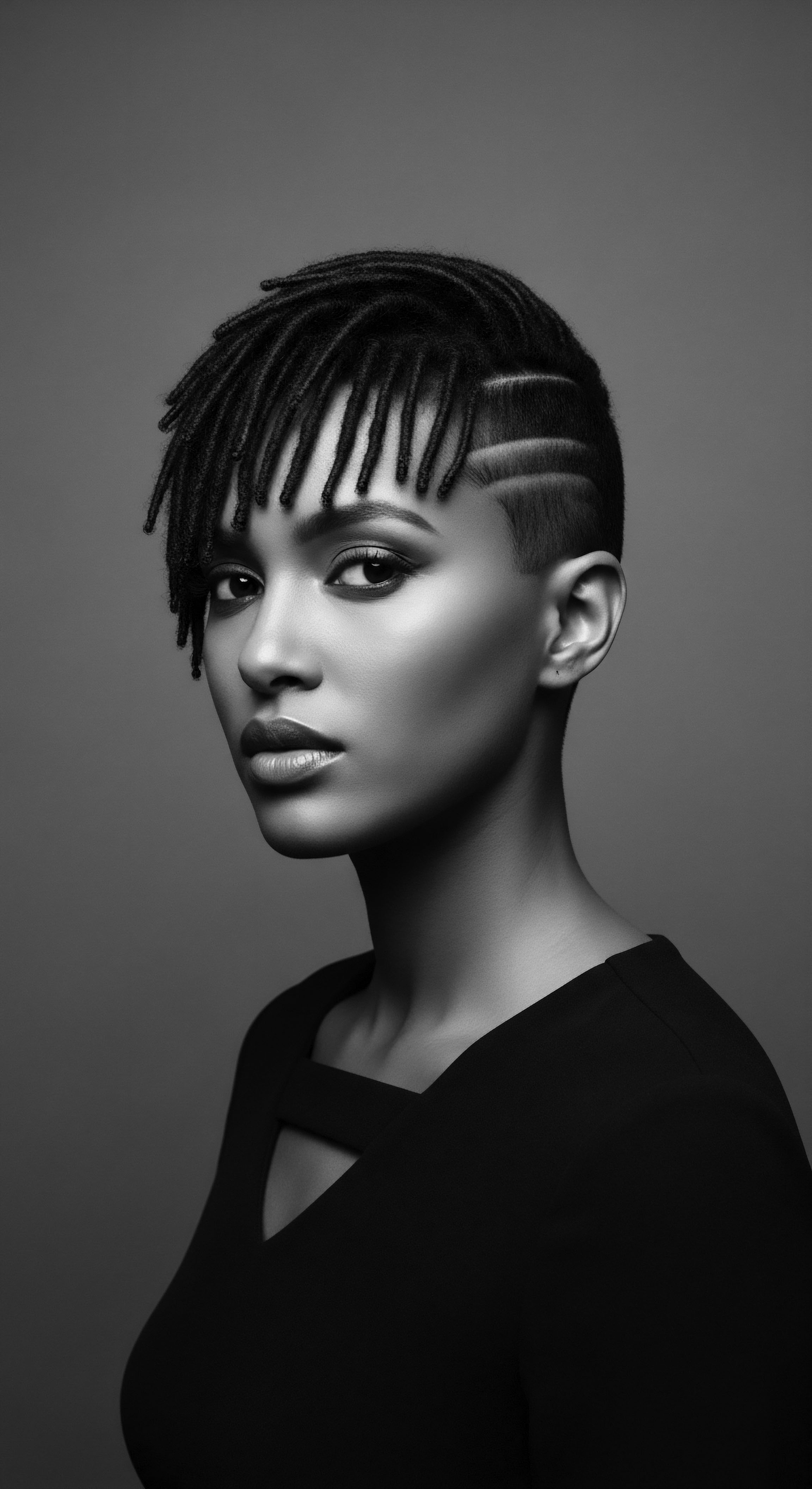
What Ancestral Hair Practices Reveal About Belonging?
Across the African continent and within diaspora communities, hairstyling rituals often served as powerful expressions of identity and social standing. The intricacies of a hairstyle could convey age, marital status, tribal affiliation, wealth, and even one’s role in the community. Hair was a language spoken through adornment and manipulation, a living canvas upon which the story of an individual and their people was etched.
Consider the various forms of braiding. In many West African societies, the act of braiding was a communal activity, a time for sharing stories, teaching life lessons, and strengthening familial ties. The patterns themselves were not arbitrary. Cornrows, for instance, were often used to depict geographical maps, religious symbols, or codes for escape during times of enslavement, transforming a functional style into a powerful act of resistance and communication (Byrd & Tharps, 2001, p.
19). The very lines drawn on the scalp held secrets, memories, and aspirations.
Ancestral styling rituals, particularly braiding, transcended mere aesthetics, serving as intricate social scripts and powerful communal bonds.
Such detailed work, sometimes taking hours or even days, underscored the value placed on hair and the relationships built around its care. The elders, skilled in these traditions, would instruct younger generations not only in the techniques but also in the deeper meaning behind each style, ensuring the cultural significance was preserved and understood. These were not simply beauty routines; they were integral to the preservation of communal memory and identity.

The Tender Application of Natural Elements
Long before the advent of industrial beauty products, ancestral communities relied upon the bounty of the earth for hair care. Oils, butters, clays, and herbal infusions were carefully prepared and applied, their efficacy born of centuries of empirical knowledge and intimate understanding of nature’s offerings. These ingredients were chosen not merely for their cosmetic benefit, but for their perceived holistic properties, their connection to vitality and spiritual purity.
- Shea Butter ❉ From the shea tree, native to West Africa, its rich emollients have nourished and protected textured hair for millennia, guarding against dryness and breakage, revered for its life-giving properties.
- Argan Oil ❉ Derived from the argan tree of Morocco, this golden oil, known for its deep conditioning and restorative qualities, became a cherished part of hair rituals, a liquid gold for luminosity.
- Chebe Powder ❉ Originating with the Basara women of Chad, this blend of herbs and spices is traditionally applied to hair to seal in moisture and promote hair length retention, a practice rooted in generations of observation.
- Aloe Vera ❉ Used across various indigenous cultures for its soothing and moisturizing properties, the plant’s gel was applied to scalp and strands to alleviate irritation and soften hair.
The preparation of these remedies was often a ritual in itself, accompanied by songs, prayers, and communal gathering. The process imbued the ingredients with intention and purpose, transforming a simple act of care into a profound expression of reverence for both nature and self. The very act of applying these traditional preparations became a mindful meditation, a connection to the earth’s wisdom that sustained communities for centuries.
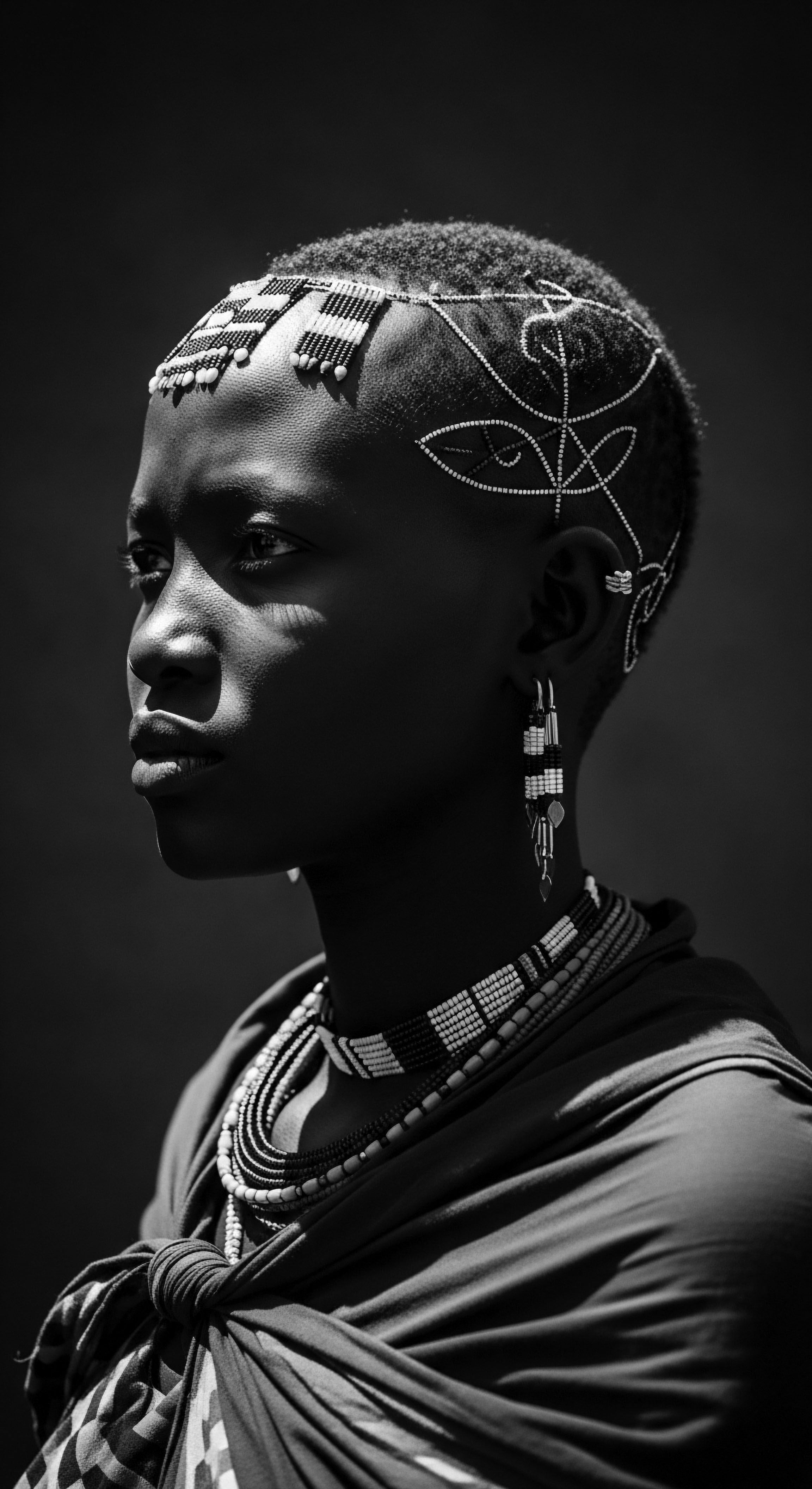
Relay
Textured hair, with its profound historical weight, has always served as a potent symbol in the ongoing relay race of cultural identity and self-determination. From the fields of enslavement to the battlegrounds of civil rights, and into the contemporary halls of global fashion, the meaning of these hairstyles has continually shifted, absorbed new layers of significance, and continued to represent an unbroken chain of heritage. It is a story of adaptation, defiance, and ultimately, celebration.
The very act of choosing one’s hairstyle, particularly for Black and mixed-race individuals, has never been a trivial matter. It has been a declaration, a political statement, a quiet revolution etched onto the crown of the head. This section explores how textured hairstyles have been central to shaping identity, challenging societal norms, and paving pathways for future generations to stand proudly in their ancestral legacy.
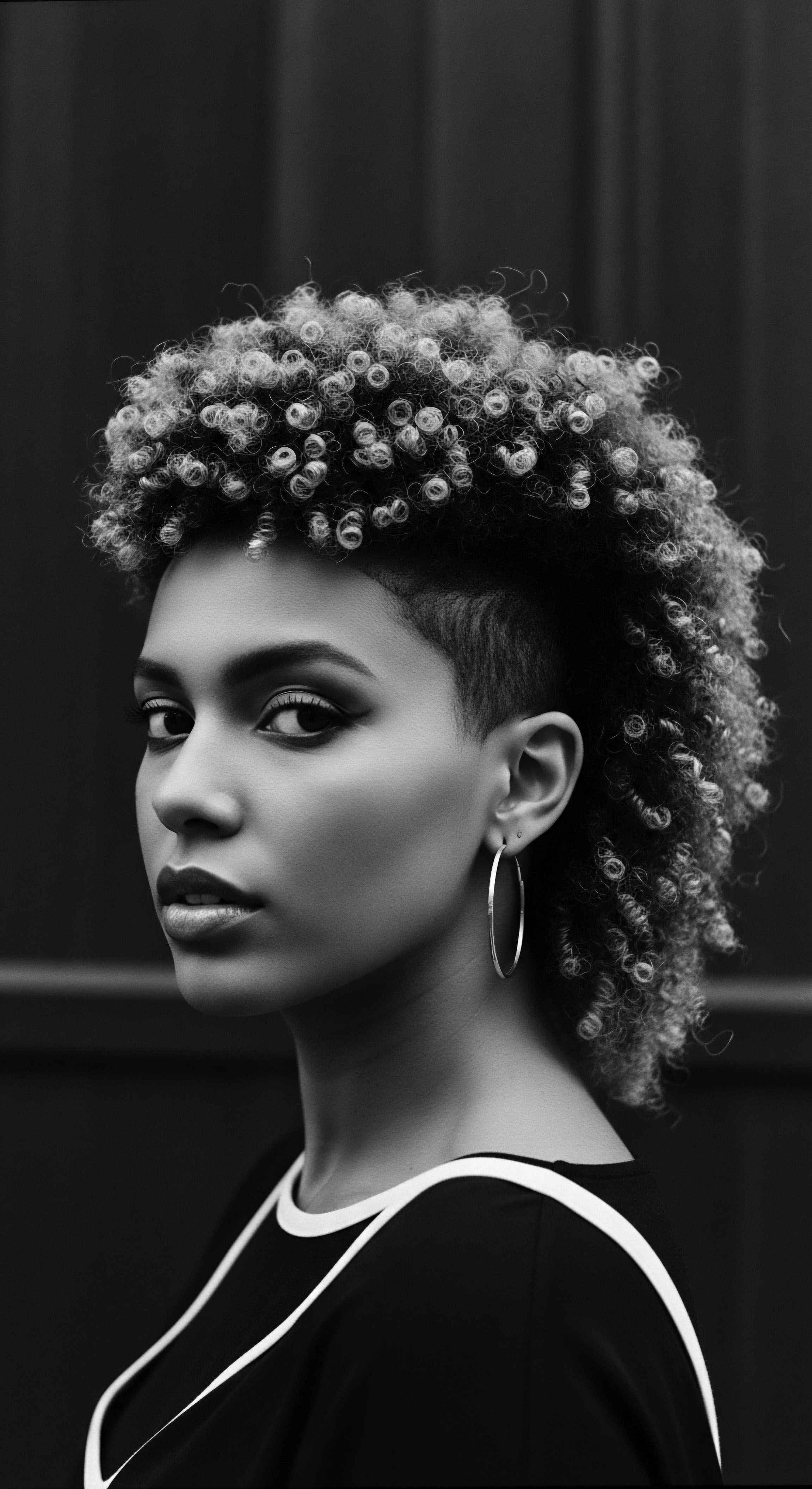
How Did Enslavement Alter Hair’s Meaning?
The transatlantic slave trade inflicted an unprecedented rupture upon African peoples, systematically dismantling cultural practices and identities. Yet, even in the brutal conditions of enslavement, textured hair continued to hold meaning, albeit often in transformed ways. Stripped of traditional tools and time, hair care became a clandestine act, a whispered secret shared between kin, a resilient link to a forcibly severed past.
For some, intricate braiding patterns became literal maps to freedom, secretly charting escape routes or conveying messages to fellow enslaved people. This defiance, though often silent, speaks to the inherent power hair retained as a medium for communication and resistance. The meticulous work of styling in such harsh circumstances was not just about appearances; it was an act of preserving dignity, asserting humanity, and maintaining a connection to a lost heritage.
Under oppression, textured hair transformed into a silent language, conveying resistance, resilience, and an unwavering connection to ancestral dignity.
Conversely, some hairstyles were forcibly simplified, and conditions often prevented proper care, leading to hair being covered or shorn. This suppression aimed to strip individuals of their cultural markers and identity. However, even in this erasure, the inherent texture of the hair remained, a persistent biological truth that could not be fully erased, a seed of heritage awaiting its moment to reclaim its public space. Research by historian Sheila Flemming-Brown illustrates how, despite severe limitations, African Americans during slavery continued to adapt, using whatever natural materials were available—from hog lard to various plant oils—to care for their hair, demonstrating an enduring commitment to self-presentation and connection to practices (Flemming-Brown, 1997, p.
54). This demonstrates the adaptive continuance of ancestral care rituals, even in the most inhumane conditions.

The Aesthetics of Black Power and Beyond
The mid-20th century witnessed a powerful resurgence of natural textured hair as a symbol of identity and political affirmation, particularly within the Black Power Movement. The Afro, with its unapologetic volume and proud silhouette, became a potent emblem of Black pride, self-acceptance, and a rejection of Eurocentric beauty standards. It was a visible manifestation of a call for liberation, a declaration that Black was indeed beautiful, untamed, and powerful.
The Afro’s rise was a direct challenge to centuries of conditioning that often equated straightened hair with respectability and assimilation. Choosing to wear one’s natural texture, often despite societal pressure and discrimination, was an act of radical self-love and cultural reclamation. It signified a return to an ancestral aesthetic, a visible breaking of chains that had bound both body and spirit. This era laid foundational groundwork for the broader natural hair movement that would gain renewed momentum in the late 20th and early 21st centuries.
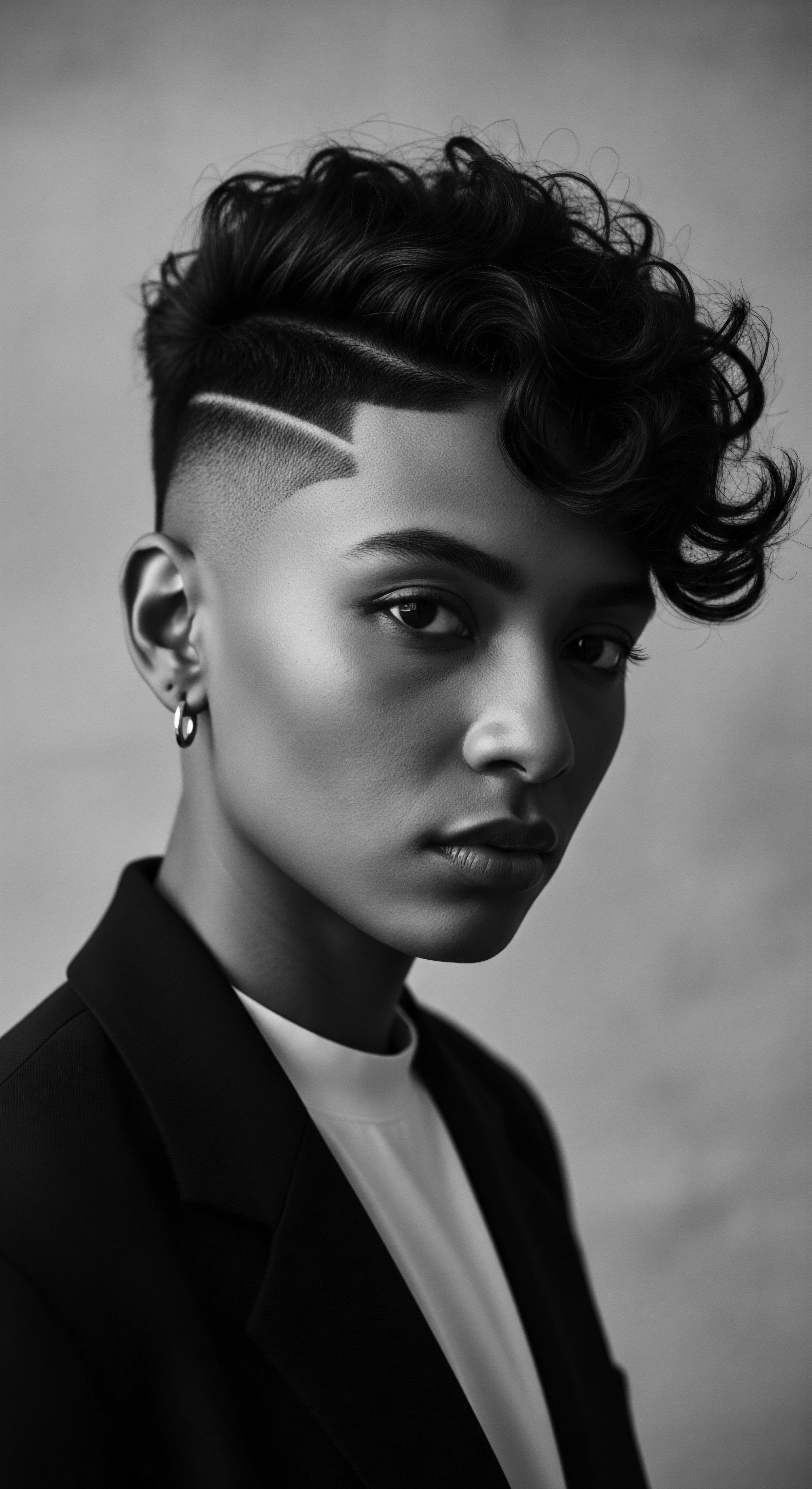
Contemporary Heritage Reclamations
Today, the meaning of textured hairstyles continues to expand and deepen. What began as a movement of political necessity has blossomed into a global celebration of diversity, creativity, and self-expression. The digital age has allowed for an unprecedented sharing of traditional techniques and modern innovations, connecting individuals across continents in a shared appreciation for textured hair.
The resurgence of styles like braids, twists, and locs, often worn with intricate patterns and vibrant colors, speak to a conscious effort to reclaim and reinterpret ancestral aesthetics. This modern natural hair movement is a powerful continuum of heritage, drawing inspiration from historical forms while innovating and adapting them for contemporary life. It reflects a growing collective consciousness around identity, history, and the profound beauty embedded within every unique curl pattern. It is a dialogue between past and present, a living legacy.
This period sees a widespread acknowledgement of hair as an element of ancestral wisdom. Salons dedicated solely to textured hair are commonplace, and an entire industry has sprung up around products designed to cater to its unique needs, often inspired by traditional ingredients. The conversation extends beyond mere aesthetics, encompassing discussions around hair discrimination, cultural appropriation, and the ongoing fight for equitable recognition of textured hair in professional and educational spaces. This ongoing relay ensures that the historical meaning of textured hairstyles remains dynamic, relevant, and endlessly compelling.
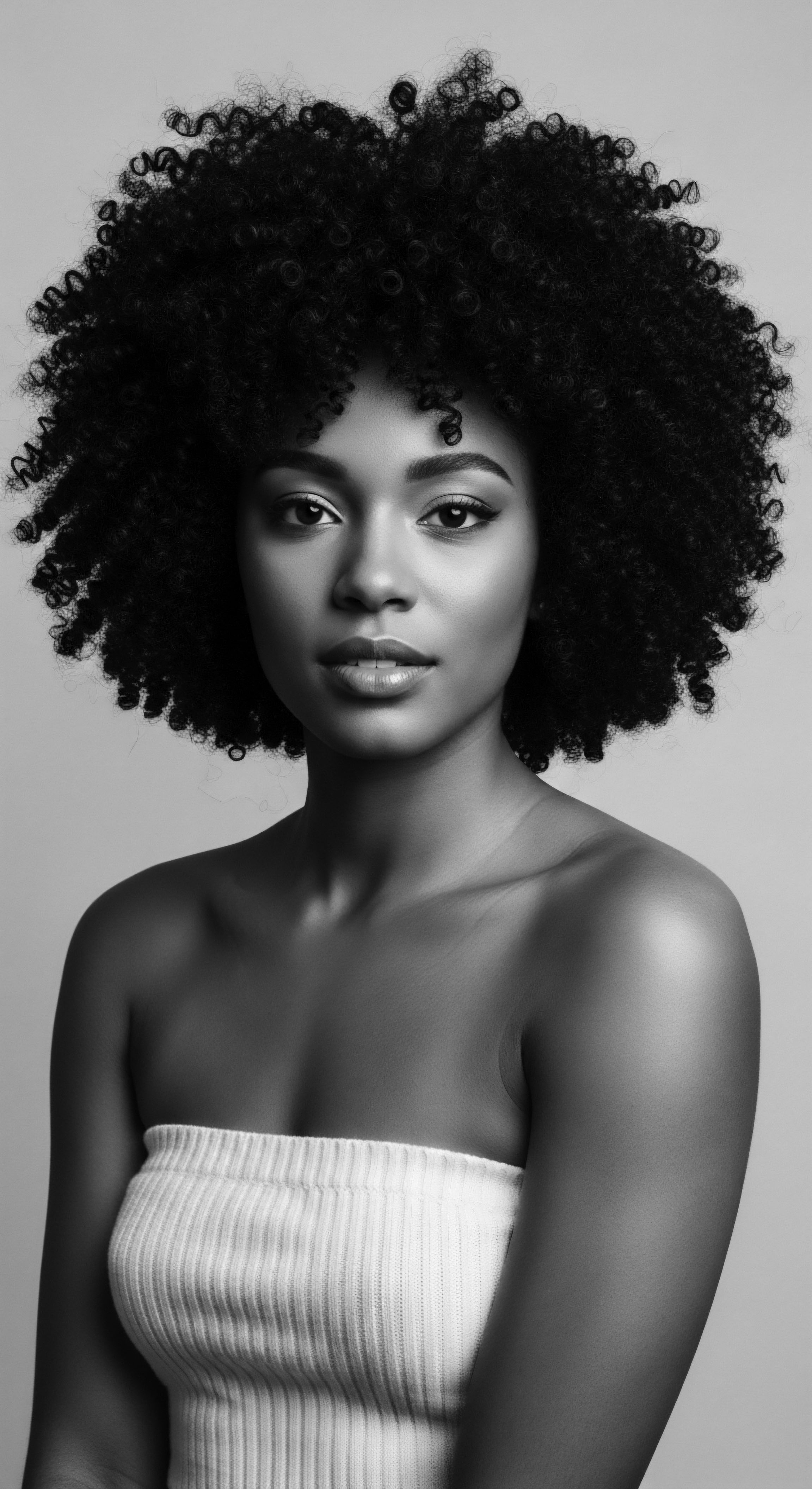
Reflection
Each strand of textured hair, whether a tight coil or a gentle wave, carries within it an ancient memory, a whisper of a time before. It is a living artifact, a dynamic repository of ancestral knowledge, cultural resilience, and profound beauty. To inquire into the historical meaning of textured hairstyles is to stand at the confluence of biology and legacy, science and soul. It is to recognize that hair, in its myriad textures, has always been more than fiber; it has been a language, a map, a declaration, and a sanctuary.
The journey from elemental biology to communal ritual, and onward to the bold expressions of identity shaping today, demonstrates an unbroken chain. This living library of textured hair, its “Soul of a Strand,” continues to write its story. It invites us to listen closely to the echoes from the source, to honor the tender thread of care and community, and to witness the unbound helix as it continues to twist and turn, carrying forward a vibrant, enduring heritage for all to witness and respect. The meaning, then, is not fixed; it is a continuously unfolding narrative of strength, spirit, and magnificent existence.
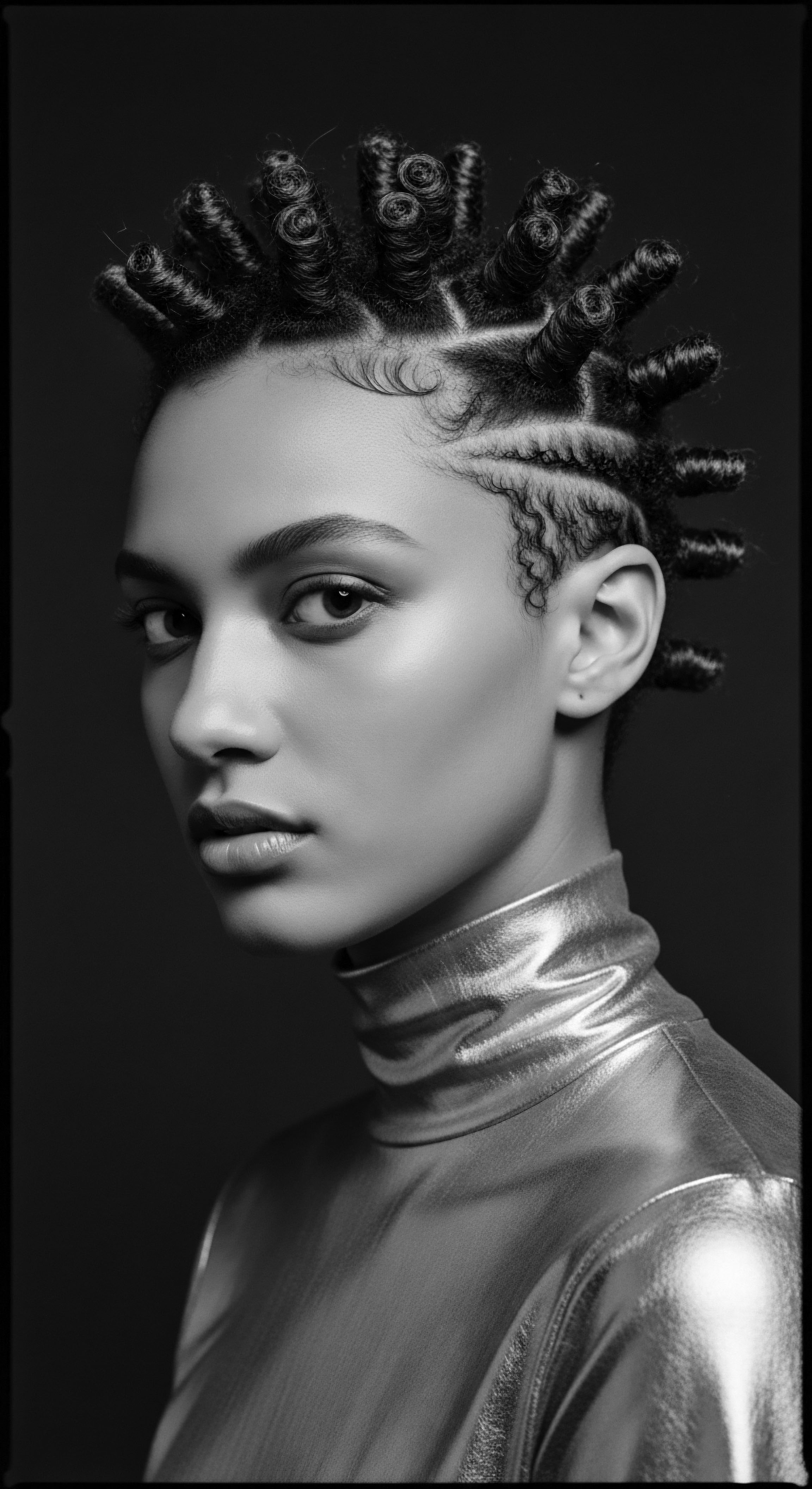
References
- Byrd, A. D. & Tharps, L. D. (2001). Hair Story ❉ Untangling the Roots of Black Hair in America. St. Martin’s Press.
- Brosnahan, K. E. (2011). African Hairstyles ❉ Styles of Yesterday and Today. PowerKids Press.
- Flemming-Brown, S. (1997). African-American Hairstyles and Their Connection to Culture. Journal of Black Studies, 27(1), 47-66.
- Hooks, B. (1995). Art, Bell Hooks ❉ Aestheticism. Routledge.
- Mercer, K. (1994). Welcome to the Jungle ❉ New Positions in Black Cultural Studies. Routledge.
- Patton, S. F. (2006). African-American Art. Oxford University Press.
- Robinson, L. (2004). Soul on Ice. Vintage Books.
